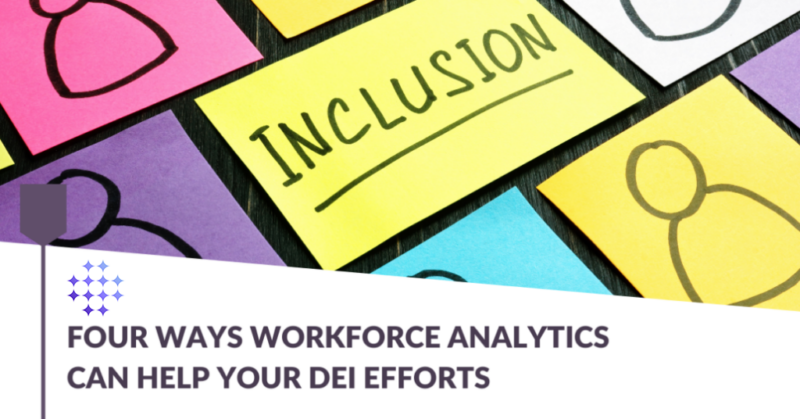How Executive DEI Buy-in Is Impacted By The 5 Executive Personas
June 20, 2021

As companies are coming to grips with the need for DEI, there are so many questions they have before embarking on a DEI journey. These questions include but are not limited to, does DEI work, is DEI a business driver or a nice to do, how can we execute a DEI plan without alienating parts of our organization, have organizations become so politically correct that their creativity and solutions have been compromised? Each of these questions is important and they serve as a gateway to the DEI journey. However an organization arrives at addressing DEI is a good thing but no matter how they get there, one thing remains constant – Executive buy-in is critical to the success of any DEI effort. There are varying stages of executive involvement and the level of their engagement and the associated mindset will be a determining factor to the success of your DEI initiative. Here are the five executive personas we have identified:
Unconscious
Executives who are in this stage are either unaware or ill-informed about the issues within their company. It is quite possible that they hear the noise but not to the extent of how it really lives in their company. It is also possible that based on the information they have been given they really don’t see DEI as a big problem within their company. The results are solid, the company is working and DEI just doesn’t seem to be a business driver. In either case, whether they know a little or underestimate the problem, this unconsciousness makes it impossible for the company to embark on a meaningful DEI journey.
So how do executives get out of this stage? First, if they are hearing “DEI noise” they should investigate and seek a better understanding. Second, they should look to expand their circle of influencers to include those who see DEI as an issue within their company. Third, they should speak with other executives who have begun to approach the issue of DEI.
Uneasiness
Executives in this stage are aware of the problems but they don’t know where to start. This uncertainty makes them uneasy about even beginning a DEI journey. Doing nothing seems better than upsetting the apple cart. The simple truth is they are scared of making the wrong moves. What’s amazing is that this is one of the few areas in business where executives are so paralyzed that they can’t make a decision. This is in part because DEI is so complex. It is also due in part because the issue of DEI is not broached until there is a crisis. And crisis mode is definitely different from strategic planning.
So how do executives conquer their fear? First, they endeavor to move from awareness to understanding. They seek out information that makes them more knowledgeable about the subject. This can be done internally if you have the resources and the people willing to tell the boss the truth. It can also be done with the assistance of a DEI firm that specializes in tackling this area. Second, they acknowledge DEI as a business driver. This will allow them to put the same level of decision-making into action. Third, they develop a strategy and desired outcomes related to organizational success.
Unfulfilled
Executives who are aware of the problem and have taken a course of action many times find themselves unfulfilled. This feeling may be due to the slow progress or inability to really quantify the results. Executives are looking for results but DEI results don’t always look like increased sales and additional clients. It looks like more engaged employees, more retention, and better teams. However, it takes time to be successful at DEI and many executives don’t have the patience. Executives might also be unfulfilled due to the continuous pushback they get from employees. The executive feels like they are doing things to address the issue yet feel unappreciated for their efforts. Be it slow results or continuous push back, it is certain that more than the executives are unfulfilled.
So what are these unfulfilled executives to do? First, they must resist the temptation to view everything they do as perfect. This mindset will serve them well as it will allow them the latitude to make mistakes and the attitude to receive criticism. Second, they must begin with patience. A problem that has been decades in the making (i.e. equal pay for women) will not be solved in a single year. Third, they must welcome feedback from those most impacted. The push back must be seen as push forward. The reality is that executives should view feedback from the viewpoint of their employees who want the best for the company. That is the only reason they are speaking up. There are other places to work but their hope is that this one will work!
Unfinished
Executives in this stage recognize that the job is unfinished but hope that what they are doing will be enough. There is just too much time and energy going into an initiative that doesn’t impact the bottom line – at least that is how they see it. Unfinished is a bit different from unfulfilled. In unfulfilled, the executives are frustrated that their efforts are not moving the needle or are not landing right with employees. Whereas with unfinished, the executive views their actions as being necessary and sufficient despite the push back and feedback they receive which says the contrary. This attitude is nothing more than a half-hearted approach better known as half-stepping – The belief something is better than nothing.
So what is an executive to do? First, stop lying to themselves that a half-hearted effort is enough. What they are doing might be necessary but it is not sufficient. Second, develop a short-term and a long-term strategy designed to continue the work. Third, recognize that DEI is a business issue that will always need tending to. Akin to developing a sales effort, DEI demands dedicated attention and support.
Undaunted
Executives at this stage have fully committed to a DEI journey. The undaunted hear the noise and welcome the feedback. They too are sometimes uneasy, but they don’t let it scare them into not doing anything. They are also unfulfilled but they use it as fuel to learn and to grow. And they know that the work is a progression versus a series of starts and stops. These executives are just simply committed.
So what are these executives to do given they have the commitment? First, they must continue to communicate the importance of DEI to their organization. Second, they must continue to engage people outside of their leadership teams to better understand the issues. Third, they must set clear goals and milestones connected to business performance including issues like retention and advancement. Forth, they must think outside the box like they do with all other business challenges. And finally, they must always be open to change.
While these suggestions are not exhaustive, they are instructive. The key is to have executives actively involved in the development and implementation of any DEI plan. This includes allocating resources in people, capital, and dollars. DEI is not just a side issue it is a business issue that if goes unattended will negatively impact your business for years to come.
Written by: Reggie Ponder, Executive Marketing Lead


